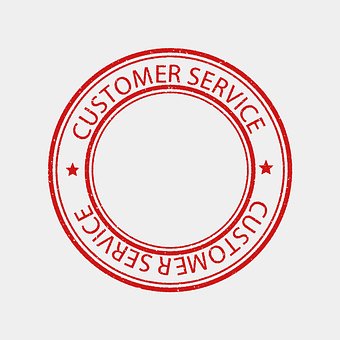Customer Services Strategies and Tools Course Bundle
$589.05
Get the Tennessee State University “Tiger” Course Bundle and Save $!
Course Length: 19 Weeks
Course Hours: 56
Available!
Return to StoreServicing a customer is a part of every purchase and interaction with internal and external contacts. It can last a few seconds up to hours. So if we all do it and experience it every day in almost everything we do, why isn’t good customer service the norm?
We all have stories about when we were treated exceptionally well or extremely poorly. We tend to share these extraordinary stories with others. We all know that word of mouth marketing can be the absolute best advantage or the worst drawback for a company.
Warren Buffett said it best: “It takes 20 years to build a reputation and five minutes to ruin it. If you think about that, you’ll do things differently. “
Outline
Servicing a customer is a part of every purchase and interaction with internal and external contacts. It can last a few seconds up to hours. So if we all do it and experience it every day in almost everything we do, why isn’t good customer service the norm?
We all have stories about when we were treated exceptionally well or extremely poorly. We tend to share these extraordinary stories with others. We all know that word of mouth marketing can be the absolute best advantage or the worst drawback for a company.
Warren Buffett said it best: “It takes 20 years to build a reputation and five minutes to ruin it. If you think about that, you’ll do things differently. “
A few basic rules about customer service:
Honesty is the Best Policy. Integrity – Be honest and own up to your mistakes. Communicate what you plan to do to change or prevent the same mistake from happening again. Don’t be fooled into believing that a regular ‘mea culpa’ will get you off the hook. At some point, the plan to fix the problem must take effect!
Break Glass in Case of Fire. Response Time – The best tact is to quickly get on the phone with the customer to explain your company’s mistake. Don’t rely on email for this communication if it can be done quickly one on one. If you are communicating to a large customer base then email is certainly the fastest and most effective way to quickly notify your customers that you are aware of the problem. Frequent updates is there is a protracted issue and a brief overview of how you will prevent it from happening in the future will give your customers confidence that you are aware of the customer impact.
Keeping it Real. Set a Realistic Expectation – Customers who have been promised something that isn’t delivered as promised are far more frustrated and disappointed than if they are notified at the outset they won’t have it sooner than later. In other words, under promise and over deliver is the best policy. This may take some arm wrestling with other departments who want to take a feature or product to market before it is ready. Set the expectations correctly internally as to what the fallout may be so everyone understands the impact on customer satisfaction and ultimately customer retention.
R-E-S-P-E-C-T. Everyone in your company should love your customers. Without them, you have no company. This doesn’t mean you won’t have difficult customers who will push the limits and try everyone’s patience. But if you don’t have a company philosophy to respect and appreciate your customers, the opposite tone will infect customer interactions from all departments. All departments, customer-facing or not, should care about customer satisfaction.
Five Tenents of Customer Service Metrics
The first question you should ask yourself…How do you measure customer satisfaction?
If you are measuring the # of complaints you are or are not receiving, you are in trouble. Not everybody bothers to take the time to tell you about his/her horrible experience. If you are asking your customers if they are satisfied, you are telling them that their satisfaction matters.
There are many different ways to ask: post-purchase and post-support surveys, enclosures in the monthly invoice, follow-up phone calls and quarterly or annual surveys. The right method depends on your business and your customer base. Try different ways. Just do it.
Let’s be clear: if you’re not measuring any part of your service delivery, you are missing a huge opportunity to improve, grow or even save your business during these scrutinizing, tight economic times.
The challenge with specifying key indicators is that not all businesses will use the same metrics. For example, a retail or fulfillment organization will have decidedly different key performance indicators than a software-as-a-service company.
For the purposes of this discussion, I have highlighted relatively general metrics and incorporated a few varying perspectives for different use cases.
Service Level – For call centers, support, and service desks, first call resolution is the Holy Grail. For a shipping operation, product delivery and project implementation, on-time performance is the measuring stick. In a high transaction business, the first interaction with a customer will be a key determinant of whether the customer will return. Don’t underestimate the importance of timeliness and thoroughness.
Customer Retention – For SaaS businesses, Utilization is the best indicator of a customer’s dedication to your service. Use this metric to understand who is at risk at contract renewal time. Monitoring Repeat Business is going to help non-SaaS businesses understand how sticky their product or service is for their customer base. You should know which customers are using or buying different parts of your business. These customers who buy throughout your offerings are perhaps your most important customers to focus on for your retention strategies.
Response time – You’d be surprised how many customer surveys come back with comments such as “your service is great, you got back to me right away….” “I was surprised with how quickly you responded to my inquiry and it made all the difference even if I didn’t get the answer I was hoping for…” In today’s world of electronic relationship management, response time is one of the only ways we can communicate our sense of urgency and concern for our customers and their experience with our product or service. What is your Response goal – within X hours? Set one and achieve it. You should know what your competition is doing and beat their goal.
Want to really blow away a customer and cement your relationship? Pick up the phone and give them a personal call.
Time with the Customer – Are your customer-facing employees incentivized to keep calls short or to move too quickly from customer to customer? If so, you are sending the wrong message and subsequently affecting the quality of the customer interaction. There is a definite happy medium between the overly chatty service provider and the thorough and efficient provider. Set your benchmarks for call duration and general time with the customer in relation to the ultimate goal of first call resolution, NOT the other way around.
In other words, a completely satisfied customer not requiring a follow-up call or visit is much preferred over a quick, unresolved interaction.
Churn – Cancellations and returns are the equivalents to churn. If you don’t know how much business you are losing, you won’t be able to understand how much new business you will require to stay out of the red. As important as knowing how much, is understanding WHY you are losing customers. Take it to the next level and use follow-up surveys, phone calls, personalized ‘how can we get you back’ emails. This survey information is the real business insight for understanding your lost business.
Certificate Requirements
| Course Length | |
| Course Effort | |
| Total Course Hours | |
| Languages | English |
| Video Transcripts | No |
System Requirements
Internet Connection
- Broadband or High-Speed – DSL, Cable, and Wireless Connections
*Dial-Up internet connections will result in a diminished online experience. Classroom pages may load slowly and viewing large audio and video files may not be possible.
Hardware Requirements
- Processor – 2GHz Processor or Higher
- Memory – 1 GB RAM Minimum Recommended
* While our courses are accessible through multiple mobile learning platforms, some courses may include a CD or DVD with the Textbook, so you may need access to a computer with CD-ROM or DVD Drive.
PC Software Requirements
- Operating Systems – Windows 7 or higher
- Microsoft Office 2007 or higher. Also, you could use a general Word Processing application to save and open Microsoft Office formats (.doc, .docx, .xls, .xlsx, .ppt, .pptx)
- Internet Browsers – Google Chrome is highly recommended
- Cookies MUST be enabled
- Pop-ups MUST be allowed (Pop-up Blocker disabled)
- Kindle Reader App is needed for many of our courses (No special equipment needed. This can be downloaded for FREE onto your computer.)
- PowerPoint Viewer (if you do not have PowerPoint)
- Adobe PDF Reader
- QuickTime, Windows Media Player &/or Real Player
MAC Software Requirements
- Operating Systems – Mac OS x 10 or higher with Windows
- Mac office programs or a Word Processing application to save and open Microsoft Office formats (.doc, .docx, .xls, .xlsx, .ppt, .pptx)
- Internet Browsers- Google Chrome is highly recommended
- Cookies MUST be enabled
- Pop-ups MUST be allowed (Pop-up Blocker disabled)
- Kindle Reader App is needed for many of our courses (No special equipment needed. This can be downloaded for FREE onto your computer.)
- PowerPoint Viewer (if you do not have PowerPoint)
- Adobe PDF Reader
- Apple QuickTime Media Player
- Courses that include a CD-ROM or DVD may require an external drive and Parallels software to view.
FAQs
How long does it take to complete a course?
When you register for a course(s), you will receive a start date and the time frame it takes to complete the program. Once the course begins, each course is self-paced, so you can start and stop each learning module at your own pace. However, you must complete the course within the time frame to receive a certification.
What happens if I do not have enough time to complete the course within the time frame provided?
If you don’t finish the course in the time frame, you will not receive a certification. The time frame allotted to complete each course has been based on each learner giving a concerted effort to complete the course, plus the number of hours it takes to learn the information and obtain the certification. Therefore, the time frame for each course has been calculated to ensure successful completion of the course. However, if for some reason a learner is unable to complete the course, you will have to re-enroll in the course and you will be required to pay the course price in effect at the time of re-enrollment.
Once enrolled in the course, and I realize that I can’t complete the course can I get a refund?
There are NO REFUNDS once you enroll in a course. However, if you are suddenly deployed while pursuing a certification course, we will work with you to ensure you complete your studies. Learners who need to delay their course for medical reasons, may be eligible to transfer their course(s) to a future term. A medical withdrawal will be considered only if accompanied by:
A written verification and phone verification from a medical doctor stating the student cannot complete the course due to illness or disability. Please not the doctor’s note must be in English to be considered.
You can contact our office at: info@aperionglobalinstitute.com
Are there any additional materials and/or books I am required to buy for a course?
No, everything you need is included in the course. Some courses will suggest additional materials/books that can help you grasp the information better, or expand your knowledge about a topic. However, you are not required to purchase the additional information.
Are there exams I will have to take in a course?
Yes, there are exams in each course to access your knowledge of the material. You will be required to pass those exams to successful complete the course. The type of exams you will take vary. They can range from multiple choice questions, essays, short answers, and/or video/audio submissions. If you diligently study and complete the assignments for each course, you will be prepared to pass the exams in the course(s).
Can I get financial assistance?
Aperion Global Institute (AGI) courses are non-credit courses, so they do not qualify for federal assistance in the United States, and AGI does not provide financial assistance. In some states, a vocational program, military program, or workforce development program will pay for qualified learners to take courses. You will be responsible for qualifying for financial assistance through those agencies and/or programs. For international students, you will also have to follow the guidelines and requirements regarding financial assistance at your institution or program.
What happens when I complete a course?
Upon successful completion of a course, within three (3) days you will receive a certification by email. You are free to save and print the certification for your educational and career needs. If for some reason you do not receive the certification, or can’t save or print the certification please contact our office at: info@aperionglobalinstitute.com
Once I provide an employer with the certification, am I guaranteed a job?
AGI does not provide direct job placement services after successfully completing a course. However, the certification you receive informs a potential employer that you have acquired the skills and knowledge to obtain employment, in most cases. We recommend that learners conduct research on the job market to make sure you have the required job skills and expertise.
What software or hardware do I need, and what are the system requirements to take courses?
To take our courses, you must have access to a computer and the internet. You can use a Mac and/or PC., tablet, phone. You don’t have to use the same device to log-in for the course(s). We recommend that you have a word-processing program (Microsoft Word is the best), Abode Player, and the latest version of a free web browser such as Chrome, Firefox, Internet Explorer, Microsoft Edge, etc.
When can I start the courses?
You can start the courses on the start date only. Once the course starts, you are free to access the course anytime, anywhere, and as many times as you want with an internet connection. Please note: There are no refunds once you enroll in a course(s).
Can I receive CEU credit for courses that I successfully complete?
Please do not assume that all courses that you take and successfully complete are eligible for CEU certification. If you are seeking CEU certification for a course, we strongly recommend that you contact your institution and establish eligibility for the courses you plan to take BEFORE you enroll in a course. Although we provide you with a certificate for successfully completing a course, it is solely your responsibility to ensure that the course you enroll in and the certificate meets CEU requirements for your profession.






Reviews
There are no reviews yet.